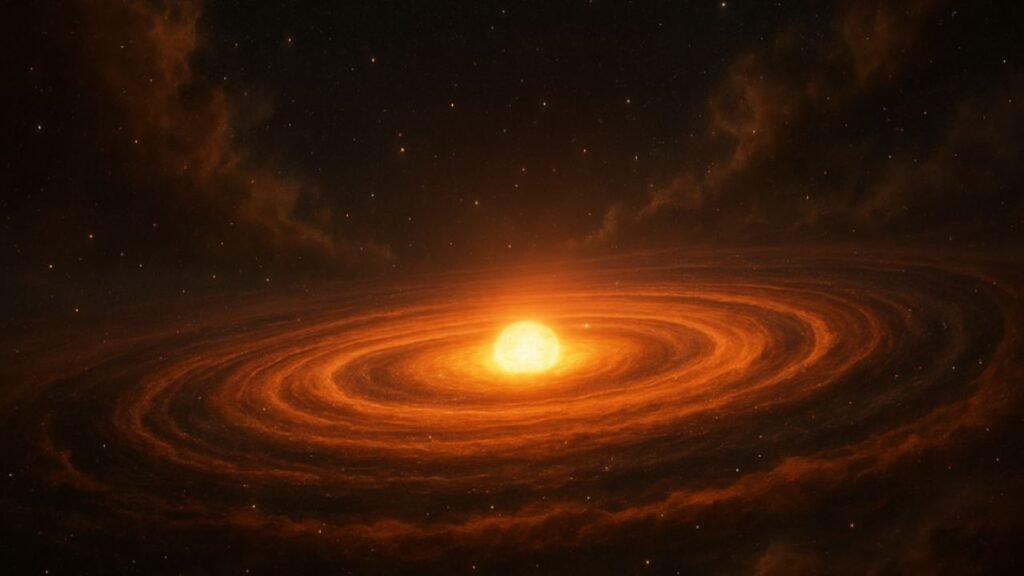Have you ever wondered who discovered solar system and how humanity learned about its place in the universe? The truth is fascinating. The solar system was not discovered by one individual because ancient societies had known most of the elements of the solar system. However, through the centuries, scientists and astronomers have reconstructed the actual way it works. The finding altered the perception of man towards the world and the universe outside.
Who Discovered Solar System?
When we ask who discovered the solar system, it’s important to understand that no one person can take full credit. Planets such as Mercury, Venus, Mars, Jupiter, and Saturn were known to the ancient civilizations. These are luminous bodies which can be observed with the naked eye and they were the objects of millennium long research.
Nevertheless, the individual who brought a revolution in the world of science was Nicolaus Copernicus. He proposed the heliocentric model, placing the Sun at the center of the universe instead of Earth. This idea marked the beginning of modern astronomy.
This is an overview of how the discovery has changed over the years and how it was influenced by some influential individuals:
| Figure | Contribution |
| Ancient Astronomers | Observed and named visible planets thousands of years ago. |
| Nicolaus Copernicus | Proposed the heliocentric model in the 16th century. |
| Galileo Galilei | Used the telescope to confirm that planets orbit the Sun. |
| Johannes Kepler | Discovered the laws of planetary motion (elliptical orbits). |
| Isaac Newton | Explained gravity as the force that keeps planets in orbit. |
So, while Copernicus is credited with discovering the solar system’s structure, many scientists played essential roles in proving how it functions.
Early Views of the Universe
Prior to Copernicus, the geocentric model was held, in which the Earth was considered to be the center of it all. This belief was advocated by ancient philosophers such as Aristotle and Ptolemy since it corresponded to the everyday experiences of the people: the Sun coming up and going down.
For more than a thousand years, this mode was the prevailing thought in humanity. But it couldn’t explain the strange backward motion of planets in the night sky. The same flaws made astronomers doubt what they had learned and find new solutions.
The Revolutionary Work of Nicolaus Copernicus

The story of who discovered the solar system changed forever with Nicolaus Copernicus in the 16th century. He suggested that it was the Sun and not the Earth that was at the center of our system.
His book, De Revolutionibus Orbium Coelestium, published in 1543, described the rotation of the planets around the Sun in circles. Although it was not fully true, his model was the beginning of further discoveries.
| Contribution | Details |
| Model | Heliocentric (Sun-centered) |
| Year | 1543 |
| Impact | Redefined our place in the universe |
The concept of Copernicus was radical. It questioned centuries of tradition and inspired a generation of scientists to find out more information concerning the discoverer of the solar system and structure of the solar system.
Galileo Galilei and the Telescope Revolution
The Copernican model was reinforced by Galileo Galilei through direct observation. He is one of the pioneers to explored space with the help of the telescope, and his discoveries revolutionized science.
He was able to see the moons of Jupiter, and it turned out that it was not all about the Earth. Galileo Galilei also made discoveries on the stages of Venus, which could only be logical when Venus was orbiting the Sun. These findings supported the heliocentric theory.
| Galileo’s Discovery | Importance |
| Jupiter’s Moons | Proved celestial bodies orbit other planets |
| Phases of Venus | Confirmed the Sun-centered model |
| Sunspots and Moon Craters | Showed imperfections in celestial objects |
Galileo was opposing religious authorities, but he did not stop. His facts provided credibility in the heliocentric model and enhanced the knowledge of the discovered solar system.
Johannes Kepler’s Laws of Planetary Motion
The work of Copernicus was enhanced by Johannes Kepler who studied the movement of planets. Planets do not travel in circular paths but Kepler discovered that they travel in elliptical paths. His three laws of planetary motion gave an account of the exact relationship between the distance and speed of a planet.
Understanding Kepler’s Laws
Kepler’s discoveries made the solar system more predictable and measurable:
- Elliptical Orbits – Planets move in oval-shaped paths around the Sun.
This explained why some planets appeared closer or farther at times. - Equal Area Law – Planets move faster when nearer to the Sun.
This revealed how speed changes with distance. - Harmonic Law – The farther a planet, the longer its orbital period.
This helped scientists calculate orbits accurately.
Isaac Newton and the Power of Gravity

Isaac Newton solved the puzzle by making known the reason why planets move in this manner. His law of universal gravitation demonstrated that all things in the universe attract all other things.
Newton published Principia Mathematica in the year 1687, which made it known that gravity is the reason the planets orbit. His law brought together the efforts of Copernicus, Galileo, and Kepler to offer a conclusive solution on who discovered the scientific aspect of the solar system.
| Concept | Description |
| Law | Universal Gravitation |
| Function | Keeps planets in orbit around the Sun |
| Published | 1687 |
The work of Newton bridged the gap between heaven and earth using physics where all the same laws were applicable.
Modern Understanding of the Solar System
Today, the solar system is referred to as a complicated system that consists of the Sun and eight planets, their moons, and countless smaller objects. The Sun’s gravitational force binds everything together.
| Planet | Feature | Distance from Sun |
| Mercury | Smallest planet | 58 million km |
| Venus | Hottest planet | 108 million km |
| Earth | Supports life | 150 million km |
| Mars | Red Planet | 228 million km |
| Jupiter | Largest planet | 778 million km |
| Saturn | Has beautiful rings | 1.4 billion km |
| Uranus | Rotates sideways | 2.9 billion km |
| Neptune | Fastest winds | 4.5 billion km |
This structure reflects centuries of discovery, from ancient sky-watchers to scientists who revealed who discovered solar system in full.
The Sun: The Core of the System
The Sun is placed at the center of everything; it is a huge ball of hydrogen and helium that sustains life on Earth. It gives the system warmth, energy, and gravity to maintain balance.
| Feature | Description |
| Type | Yellow dwarf star |
| Surface Temperature | 5,500°C |
| Composition | Hydrogen and helium |
| Function | Powers and stabilizes planetary motion |
Understanding the Sun’s role is essential to knowing who discovered solar system because every planet’s motion depends on it.
Exploration Beyond the Planets
The story doesn’t stop with the planets. The exploration of space and ongoing discoveries are the work of space agencies, like NASA and ISRO. For example, Voyager, Cassini, and New Horizons returned significant information from worlds beyond Neptune.
Also, astronomers are investigating exoplanets (planets outside of our solar system) with instruments like the James Webb telescope. Such a discovery naturally turns to the original premise of wondering who was responsible for discovering the solar system, as exploration is, in its context, never complete.
Final Thoughts: Who Discovered Solar System?
It cannot be credited to just one individual. It’s a story of generations, from ancient stargazers to brilliant minds like Copernicus, Galileo, Kepler, and Newton. Their combined efforts shifted our understanding from a geocentric world to a Sun-centered universe. This journey changed science forever. The question of who discovered solar system reminds us that progress is built over time — through observation, logic, and the courage to challenge old beliefs.
Also Read About: Hybrid Solar System Explained: Power, Panels, and Future Savings
